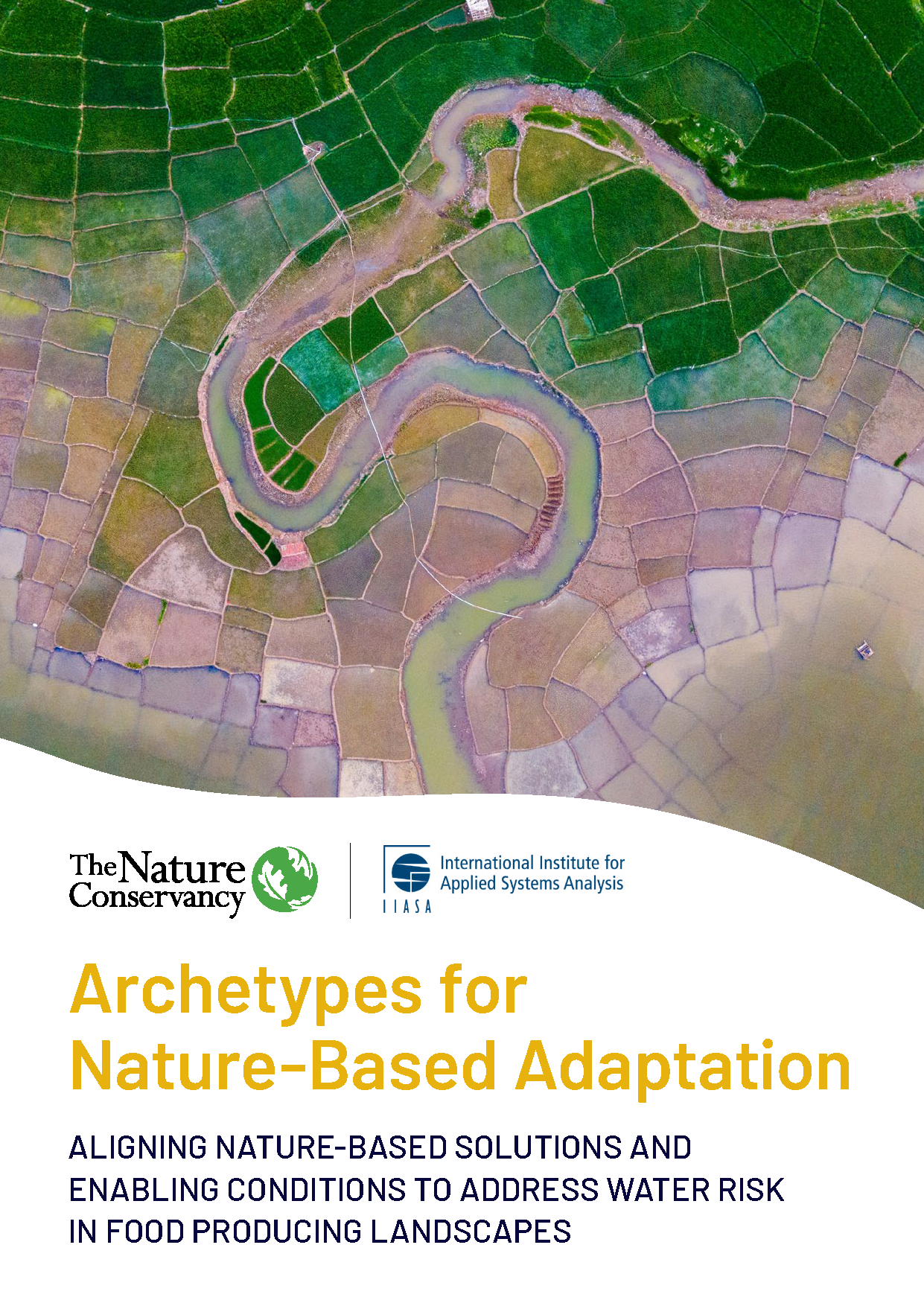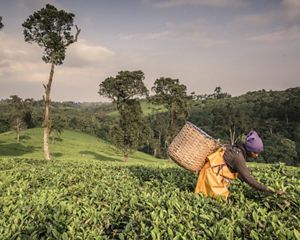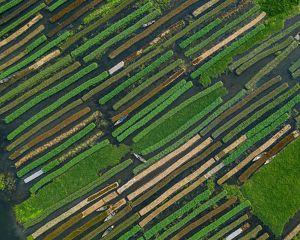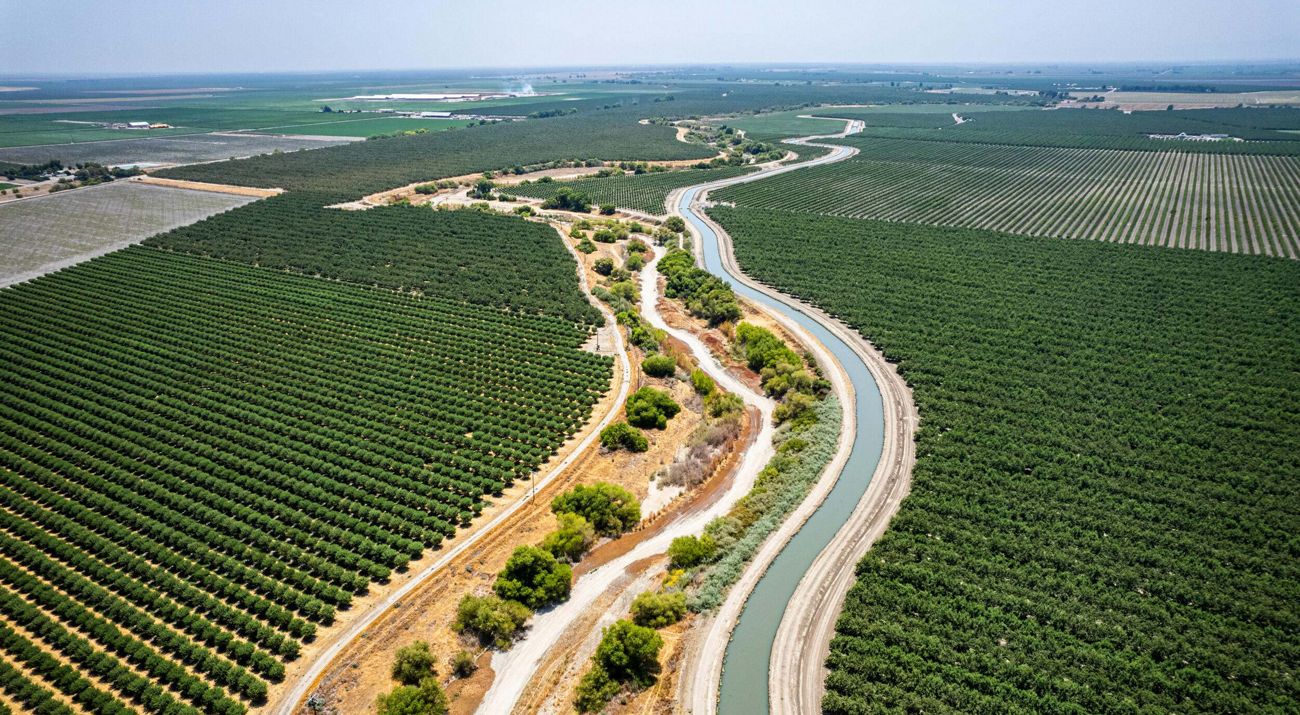
Scaling Nature-Based Solutions for Water-Resilient Food Systems
New analysis maps converging climate risks to food, water and biodiversity —and a practical approach to scale nature-based solutions.
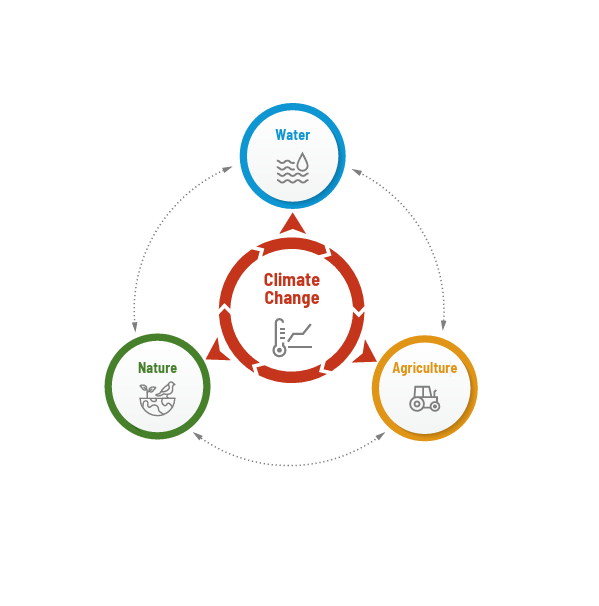
Archetypes for Nature-Based Adaptation:
Aligning Nature-Based Solutions and Enabling Conditions to Address Water Risk in Food Producing Landscapes
Report Findings
The climate crisis is accelerating—and with it, risks to food, water and biodiversity are converging. New modeling in this report visualizes future water impacts to help decision-makers act at the right scale.
- By 2050, one-quarter of land could see drought frequency increase by 70%+, with some regions—like North Africa—experiencing spikes up to 2,500%.
- 36% of land may face surface-water stress; most of that area is projected to experience severe stress.
- Global groundwater stress is expected to rise by ~30%.
- Nutrient pollution will push ~1/3 of rivers beyond ecological thresholds; many will reach levels that threaten human health.
- 64% of freshwater biodiversity hotspots will be at risk from water stress—most outside protected areas.
- Up to 25% of global crop nutrient production (zinc, iron, vitamin A) is at risk.
In 2050, 25% of global land area will experience a significant increase in drought events. Modeled estimates of increased drought events under Shared Socioeconomic Pathway 3, a scenario of regionalism rather than global cooperation.
This work connects seemingly disparate food-producing regions—from Punjab to California’s San Joaquin Valley—by the water risks they share and the solutions that transfer across borders.
In the report, we define four archetypes of water risk in food-producing landscapes and pair each with:
- a menu of nature-based solutions and
- the enabling conditions (policy, finance, governance, markets, partnerships) that make them durable.
The Four Archetypes
-
Surface-Water Stress in Mixed Production System
As rainfall declines and droughts intensify, demand on rivers and reservoirs grows. NbS—efficient irrigation, crop shifts, reconnecting rivers to floodplains—can reduce withdrawals and sustain flows. Scaling requires shared basin goals and inclusive governance from farm to watershed.
-
Groundwater Sustainability in Irrigated Systems
The world’s breadbaskets show the highest groundwater stress. NbS—low-water crops, continuous ground cover, floodplain reconnection to enhance recharge—help curb demand and sustain groundwater-dependent ecosystems. Scaling depends on locally led management, farmer engagement and supportive incentives.
-
Water Quality in Intensive Agriculture
Nutrient loading from intensive systems disrupts ecosystems, fisheries and drinking water. NbS—cover crops, riparian buffers, wetland restoration and bivalve recovery—reduce nitrogen and phosphorus. Scaling works when producers have access to finance, advisory services and market signals (e.g., credits, reduced-input markets).
-
Flooding in Diverse Farming Systems
With ~24% of croplands in flood-prone areas, floodplain restoration and riparian buffers can reduce risk while supporting habitat and production. Scaling calls for cross-sector coordination, hazard monitoring and blended finance to manage near-term risk and long-term resilience.
Regional Case Studies
Looking Forward
Climate impacts to food, water and biodiversity are accelerating—and so must our response. This report offers a new, integrated view of the challenges and a practical, landscape-level path to meet them. Drawing on real initiatives with local partners, it shows how NbS, paired with enabling policy and finance, can strengthen resilience for people and nature.
There is growing momentum behind NbS across sectors and geographies. Yet gaps remain. To meet rising risks—and move faster from analysis to action—we need to scale system-level, multi-benefit solutions that endure.
Here’s how actors across the system can help accelerate progress:
- Align and enable policy. Advocate for and implement policies that unlock investment in NbS—by aligning climate, biodiversity and land goals—and build institutional capacity to deliver integrated, landscape-scale solutions.
- Mobilize and scale investment. Leverage public incentives, innovative finance and multilateral funds to accelerate implementation and unlock co-benefits across climate, agriculture, water and biodiversity.
- Strengthen knowledge and capacity. Invest in training, tools and evidence to design, implement and scale NbS tailored to local contexts and shared landscape goals.
- Foster inclusive collaboration. Engage producers, communities and Indigenous Peoples, public and private sectors and urban-rural partners to co-design solutions and sustain them over time.
Together, with supportive policies, innovative investment, shared knowledge and inclusive partnerships, we can scale NbS at the pace and scope the moment demands—building resilient, water-secure food systems that safeguard both people and ecosystems.
Download
Learn more about how nature-based solutions can help food-producing landscapes around the world adapt to changing conditions.
DownloadGlobal Insights
To get more tips like this, plus feature stories and the latest news from the world of nature, sign up for our monthly newsletter.





